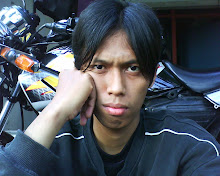It's subtle, far-reaching, and coercive, and we start learning it as early as the first grade. It may not be well-supported by research, yet it defines many peoples' self-image, their college majors, and their job choices. What is it?
It's the idea that there are "math people" and "humanities people": students who "naturally" excel in math and students who "naturally" excel at the humanities, subjects such as English, visual art, history, drama, and social studies. Sometimes this idea is linked to the notion of "right-brained" and "left-brained" people-logical vs. intuitive-though brain scientists dispute this pop-psychological idea, pointing out that traits are not localized in the brain in quite this way, and that people cannot be sorted so easily. In any case, labeling students as "math and science types" or "English and history types" may teach them to ignore, and thus limit, their own abilities in other subjects. It teaches people who may be having a temporary bad experience with math to feel like they've run up against, not a momentary difficulty, but an essential truth of their own personality.
Why, then, do so many students experience math as a chore? Cambridge mathematician Timothy Gowers suggests that it's not math as such, but the standardized instruction of math class, that turns some students off. He writes in Mathematics: A Very Short Introduction: "Probably it is not so much mathematics itself that people find unappealing as the experience of mathematics lessons, because mathematics continually builds on itself, it is important to keep up when learning it." In a classroom of thirty pupils and one teacher, the instruction has to move at a certain plodding pace, which leaves some students bored and others, who are slower to grasp a concept, frustrated. "Those who are not ready to make the necessary conceptual leap when they meet one of these [new] ideas will feel insecure about all the mathematics that builds on it," Gowers writes. "Gradually they will get used to only half understanding what their mathematics teachers say, and after a few more missed leaps they will find that even half is an overestimate. Meanwhile, they will see others in their class who are keeping up with no difficulty at all. It is no wonder that mathematics lessons become, for many people, something of an ordeal."
But Gowers sees hope for such frustrated students in math tutoring: "I am convinced that any child who is given one-to-one tuition in mathematics from an early age by a good and enthusiastic teacher will grow up liking it."
For some of today's greatest scientists and mathematicians, and for some of our greatest artists, math and the arts are more like than unalike. Theoretical physicist Nick Halmagyi, writing in Seed Magazine, compares high-level physics, with its endless chalkboarding of equations, to playing jazz, a comparison that will ring true to anyone who remembers that in the middle ages, the study of music was sometimes considered a branch of mathematics. He writes: "[W]hat I've come to realize is that the best part of what I do is collaborating with remarkably creative people. Understanding the tiny tweaks and unexpected transitions in the universe's evolution requires prodigious amounts of rigor, originality, and personality. It reminds me of the ingredients for a good jazz ensemble. We improvise and strike out in different directions, following whichever note sounds most promising. Over time different voices float to the top. We hear both bravura solo performances and wrong notes. But ultimately, there comes a singular moment when the right chord of an elegant solution reveals itself, and we reach the essential resonance of our collaboration."
From the other side of the net, so to speak, some of today's most important literary artists also find essential inspiration and food for thought in mathematics. An obvious example is writer David Foster Wallace, whose massive 1995 cult classic Infinite Jest is frequently hailed as the defining novel of its generation. Wallace's fondness for-and expertise in-advanced math is well known, and reached its culmination (so far) in a 2004 book of nonfiction, Everything And More, an equation-filled, densely logical history of the idea of infinity. Artists of every stripe have grown obsessed with such mathematical condundra as the Fibonacci sequence, chaos and complexity theory, and the ideas of Kurt Godel. John Updike meditates on computer science in his 1986 novel Roger's Version, which fellow novelist Martin Amis called "a near-masterpiece"; Amis, in turn, contemplates information theory (among other things) in his 1995 comic novel The Information.
Both fields require creativity-and that's something human beings have in abundance. Great teaching-and attentive tutoring-can help ensure that that creativity isn't limited by that self-punishing idea, "I'm just not a math person"
Sabtu, 02 Mei 2009
Langganan:
Posting Komentar (Atom)

Tidak ada komentar:
Posting Komentar